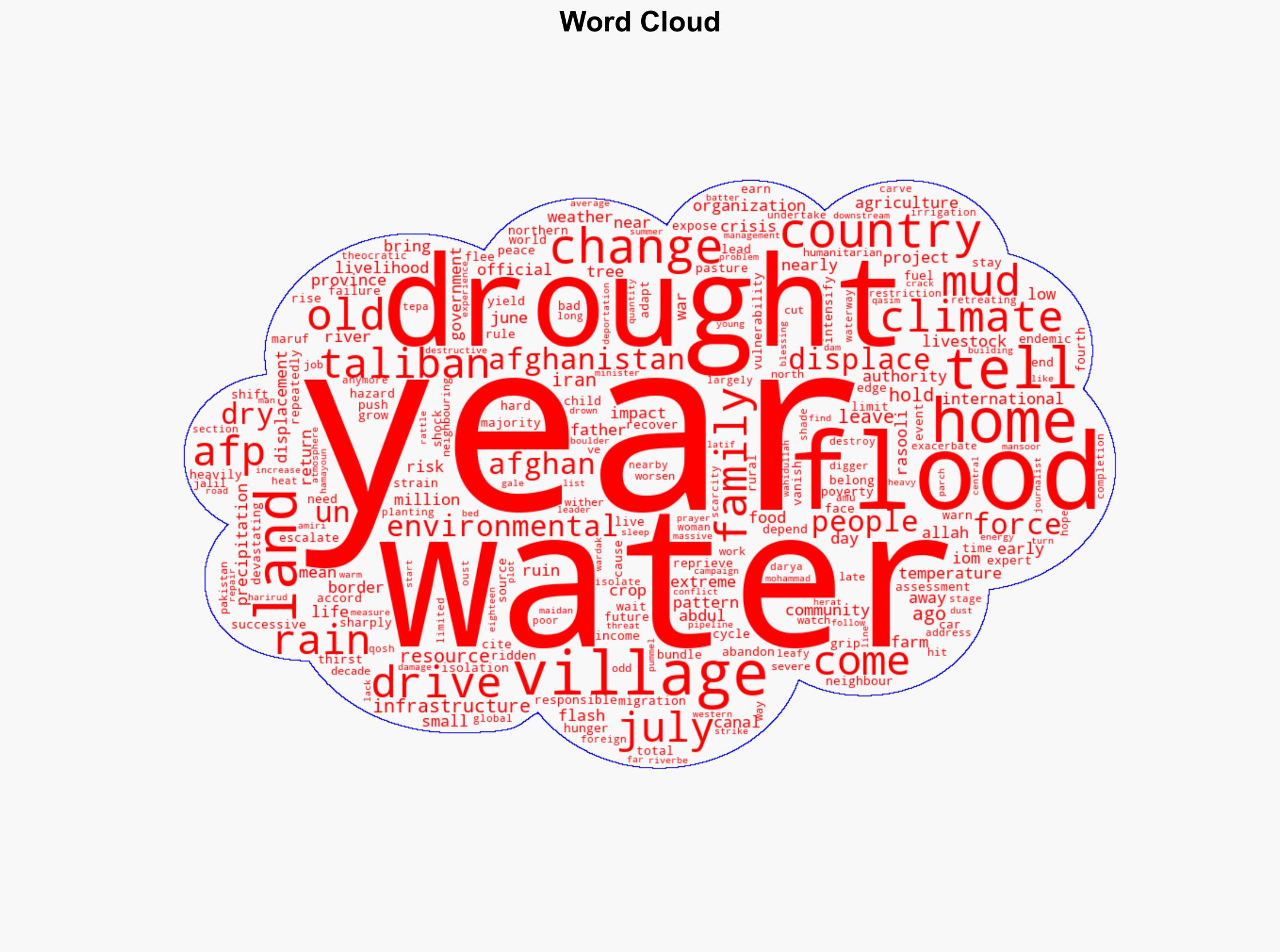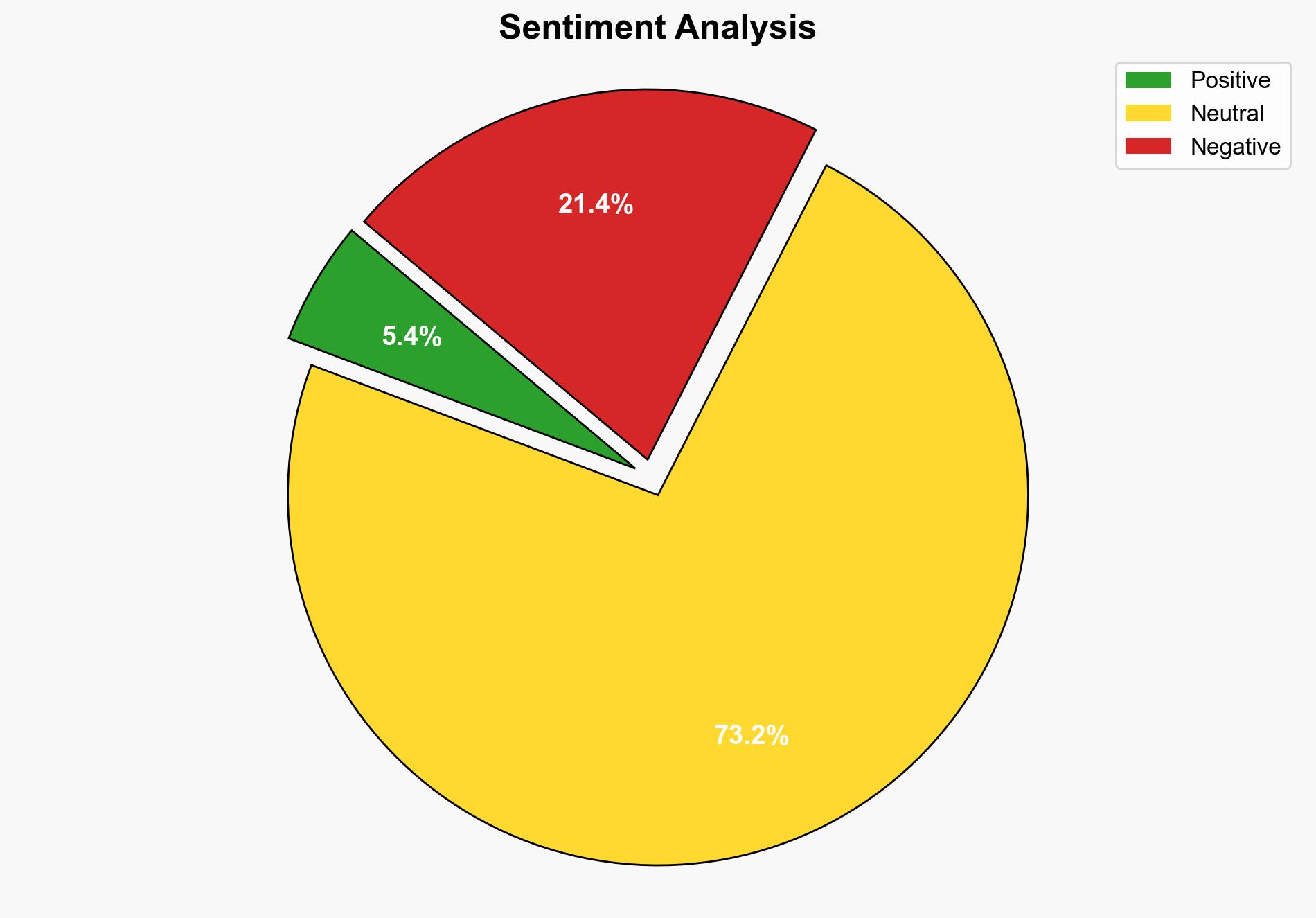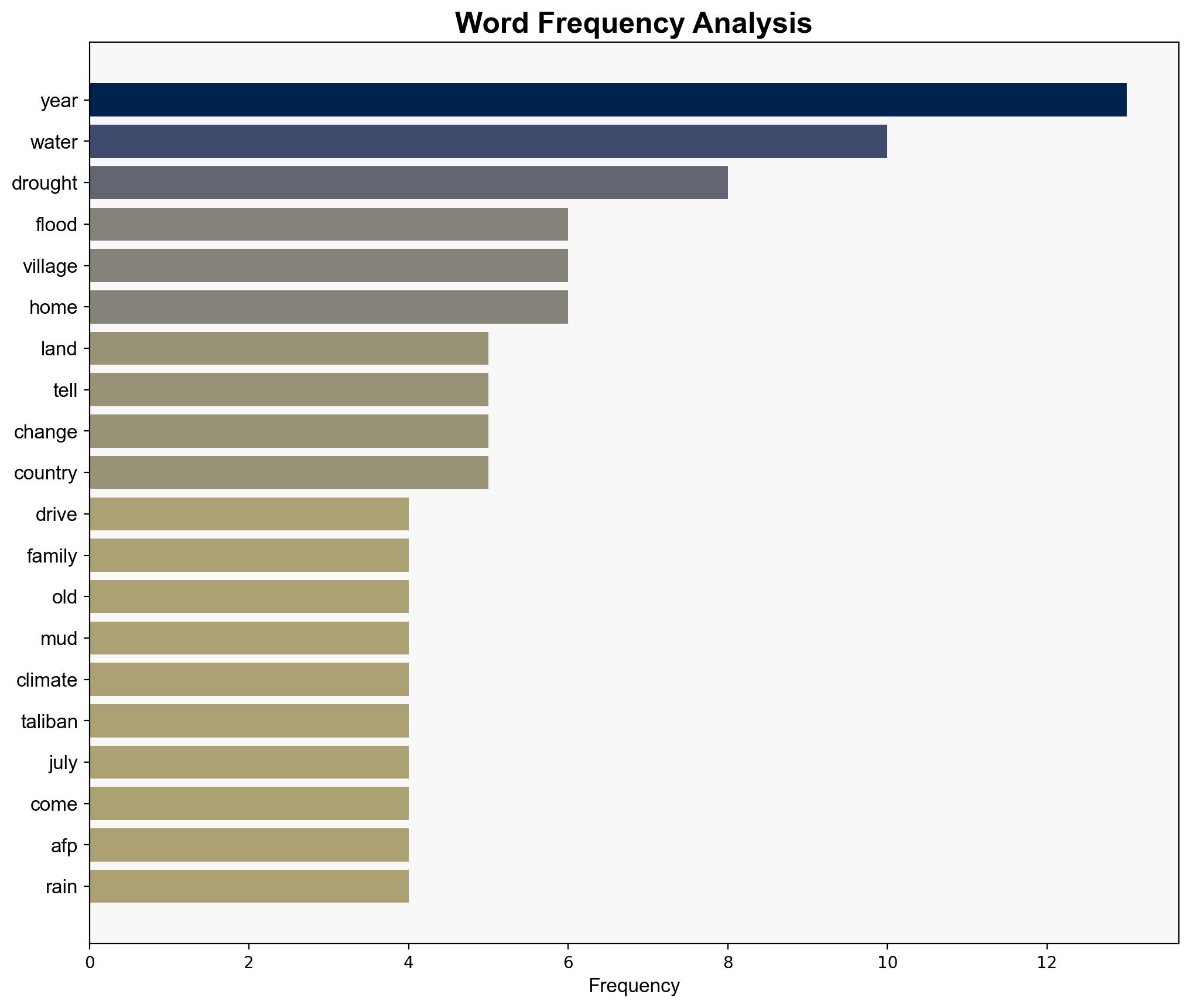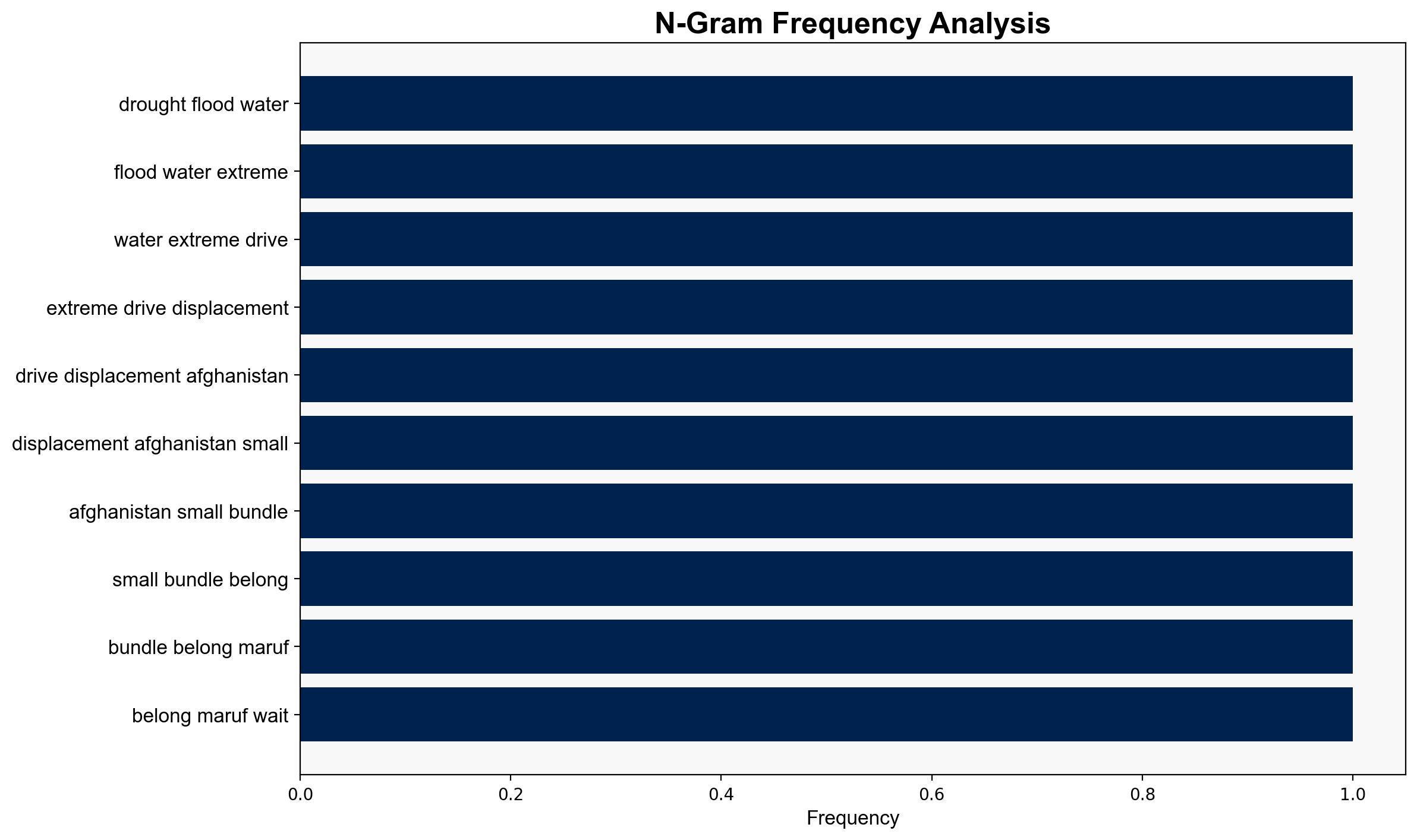From Drought To Floods Water Extremes Drive Displacement In Afghanistan – International Business Times
Published on: 2025-08-17
Intelligence Report: From Drought To Floods Water Extremes Drive Displacement In Afghanistan – International Business Times
1. BLUF (Bottom Line Up Front)
The most supported hypothesis is that climate change-induced water extremes are the primary driver of displacement in Afghanistan, exacerbating existing vulnerabilities. Confidence level: High. Recommended action: Enhance international cooperation to improve Afghanistan’s climate resilience and infrastructure.
2. Competing Hypotheses
1. **Hypothesis A**: Climate change is the primary driver of displacement in Afghanistan, with water extremes (droughts and floods) exacerbating existing vulnerabilities and forcing populations to migrate.
2. **Hypothesis B**: While climate change contributes to displacement, socio-political factors, including governance challenges under the Taliban and international isolation, are the predominant drivers of displacement.
Using ACH 2.0, Hypothesis A is better supported due to the direct correlation between climate events and displacement patterns, as evidenced by the UN and IOM reports. Hypothesis B lacks direct evidence linking socio-political factors as the primary cause, though they exacerbate the situation.
3. Key Assumptions and Red Flags
– **Assumptions**: Hypothesis A assumes that climate change impacts are immediate and severe enough to cause displacement independently of other factors. Hypothesis B assumes that governance issues are significant enough to overshadow environmental impacts.
– **Red Flags**: Potential bias in underestimating the role of socio-political factors in displacement. Lack of comprehensive data on the interplay between climate and governance issues.
4. Implications and Strategic Risks
– **Patterns**: Increased frequency of extreme weather events leading to recurrent displacement cycles.
– **Cascading Threats**: Potential for increased regional instability as displaced populations move across borders, straining resources in neighboring countries.
– **Escalation Scenarios**: Continued environmental degradation could lead to heightened humanitarian crises, potentially fueling radicalization and conflict.
5. Recommendations and Outlook
- Enhance international aid focused on building climate resilience and infrastructure in Afghanistan.
- Encourage regional cooperation to manage cross-border displacement and resource sharing.
- Scenario Projections:
- **Best Case**: Successful international intervention leads to improved infrastructure and reduced displacement.
- **Worst Case**: Continued environmental degradation and isolation lead to severe humanitarian crises and regional instability.
- **Most Likely**: Incremental improvements in resilience with ongoing challenges due to limited resources and governance issues.
6. Key Individuals and Entities
– Abdul Jalil Rasooli: Affected individual highlighting local impacts of climate change.
– Abdul Latif Mansoor: Mentioned in the context of government efforts to address water scarcity.
7. Thematic Tags
national security threats, climate change, regional instability, humanitarian crisis





